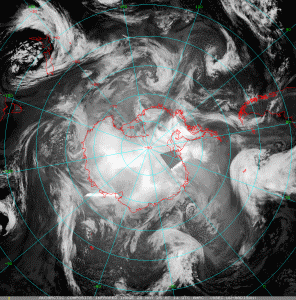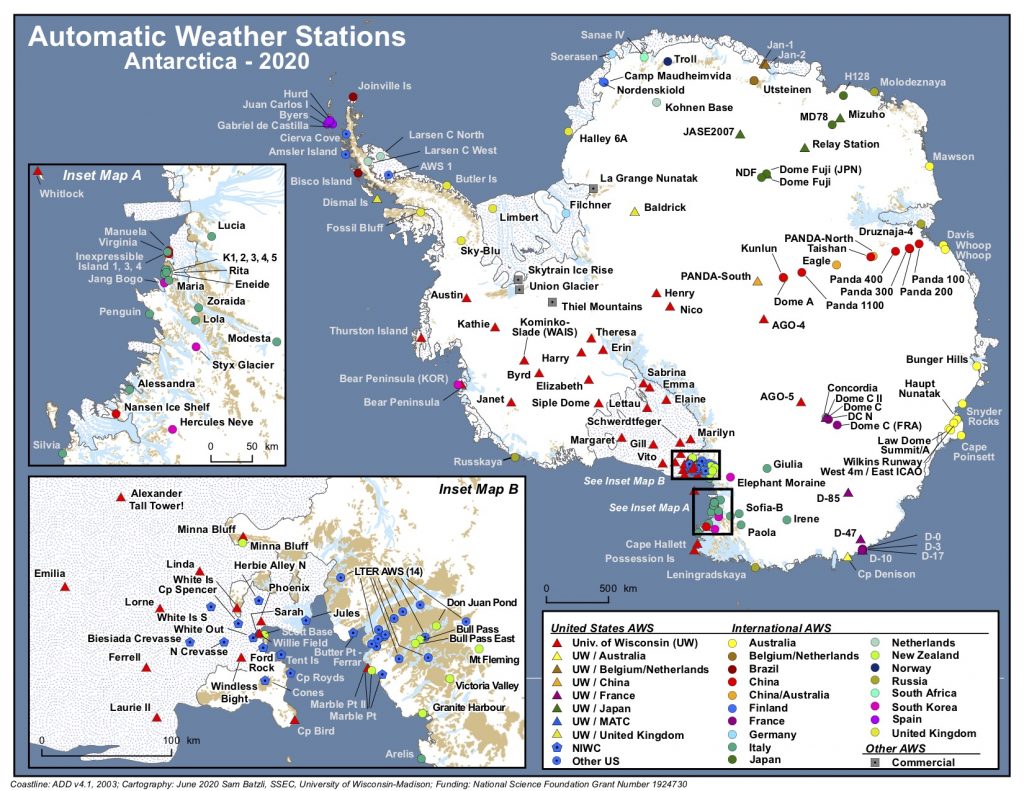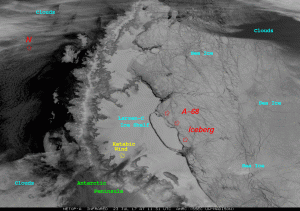The Importance of Antarctica: Weather, Climate, and Hydrology
Introduction
The polar regions are an absolutely vital part of earth’s climate system. As a continent, Antarctica has the highest average elevation. Antarctica is the coldest, driest, and windiest region on the planet. It is also home to the vast majority of the world’s ice and fresh water. Antarctica, despite being geographically remote, remains connected to the rest of the world via atmospheric circulation and ocean currents. These connections make Antarctica a major force on global climate, hydrology, and weather systems. It is incredibly important to understand the impact Antarctica has from both a regional and global perspective.
Global Atmospheric and Oceanic Connections
The connections between Antarctica and the Southern Ocean and the rest of the planet directly impact the region, the Southern Hemisphere, and the globe. The Antarctic is linked to the tropics through teleconnection patterns associated with large scale phenomena such as El Niño Southern Oscillation (ENSO). The global thermohaline ocean circulation is another global connection that critically interacts with the Antarctic. The cold bottom water formed near the continent flows throughout the rest of the world’s oceans. Knowing these connections exist demonstrates how interconnected our planet is, but our understanding of them is still rudimentary. Improved understanding of the complex interactions between Antarctica and the rest of the Earth system is vital.

A Young Observing System
Observations of Antarctic weather are still relatively new compared with the rest of the world, with staffed stations existing for approximately the last 100 years. Automatic Weather Stations dominate observing across the continent and were only started 40 years ago. Beyond the surface weather observations, the Antarctic continent itself provides an invaluable glimpse into past climates of the planet via secrets revealed from ice cores. Antarctica is an incredibly difficult region to observe. Maintaining the observing system is an extraordinary challenge with the very weather itself inhibiting the effort. Regardless, the observations have many applications. For example, with the coldest temperatures on the planet, Antarctica provides an important area for ground calibration of satellite derived surface measurements to more accurately observe the entire globe. The global forecast models also depend on widespread observations. Data gaps in any region including Antarctica can impact the ability of the models to make accurate forecasts. Neighboring areas such as Australia and New Zealand, South America, and southern Africa can all be affected by a lack of current observations from the Antarctic.

Capturing Changing Climate
Antarctica is a large geographic region, approximately 5.48 million square miles. This is approximately the size of the United States of America and Mexico combined. As expected with a region this size, climate impacts vary throughout the Antarctic continent. Current evidence points toward warming found in central West Antarctica and the Antarctic Peninsula during the second half of the 20th century. South Pole Station has also recently observed significant warming, though many other regions and stations show relatively stable conditions. These temperature trends are the result of a complex interplay of multiple forces including warming from increased greenhouse gasses, a cooling effect due to the Antarctic Ozone hole, and increased wind speeds which act to mitigate the impacts of increased greenhouse gases. The interplay between the midlatitudes and the Antarctic can be seen in extreme events, such as drought in Australia, which have been recorded in ice cores from East Antarctica.
Sea Level Rise
Antarctica is host to the largest reservoir of fresh water on the planet. Understanding the future of the Antarctic Ice Sheet is crucial to addressing the question of sea level rise. With the majority of Earth’s population living on or near the coasts of continents, the global implications of sea level rise are substantial. Beyond temperature trends, the Antarctic Peninsula has also seen a collapse of ice shelves directly linked to human induced climate change. This evidence of rapid change extends to other regions in West Antarctica (e.g., Pine Island Glacier region) and in East Antarctica (e.g., the Totten Glacier system). As the oceans warm, the ice shelves and glaciers extending over the water are eroded from underneath, increasing the speed with which icebergs break off, and the ice loss adds to sea level rise. Further coordinated observing in these areas provides invaluable data in a region with extremely sparse observations and will fuel much needed research and modeling.

Forecasting for Field Research
Antarctica is host to field research in countless disciplines of study. Each area of study has differing requirements to accomplish their research goals including: locations, timing, and duration. The success of any field program, and importantly the safety of personnel, depends on the harsh Antarctic environment. With limited resources and limited time, weather plays a major part in the conduct of field projects and achievement or not of their goals. The study of regional weather and climate in Antarctica can allow planning efforts to be more accurately prepared for remote research camps. A better understanding of Antarctic weather leads to better forecasting which can in turn lead to better planning and better outcomes. Through improved forecasting, short-term resources can be more efficiently allocated to have greater success in field seasons, allowing for more time spent accomplishing research tasks. A recent example of this has been the development of cloud derived winds from satellites in the latitude band 60° to 70° South. This improved understanding of winds leads to more accurate forecasting for flights, reducing failed attempts, and saving costs. Station operations also benefit as equipment must be maintained year round. Similarly, improved understanding of the Antarctic climate system may lead toward advances in seasonal forecasting. As an example, a better seasonal forecast can optimize deployment timing to avoid long, costly delays.
Antarctic Tourism
Antarctic tourism has been steadily on the rise in recent decades. Further understanding of how tourism impacts regions of Antarctica is vital to protect this pristine polar region. Understanding the weather, water, and climate of the various regions is also essential to tourism activities being conducted in an environmentally friendly and safe manner. Tourism also faces logistical challenges similar to research activities of countries working in Antarctica. Improvements in understanding the Antarctic environment will provide direct benefits to these industries, allowing them to operate with less waste while providing visitors with an exceptional experience.
Concluding Statement
Antarctica is a vital part of the global system. Sustained commitment to observe and study this segment of the Earth is critical to our understanding of regional and global weather, climate, and water cycles and early warning of associated hazards and extreme events. Antarctica must be recognized for its contributions to our environment, and failure to do so will be at our peril.